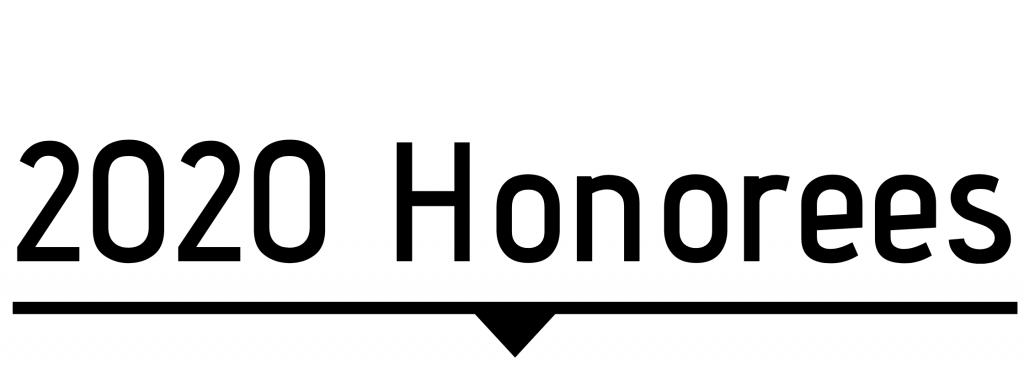This award is designed to recognize cross-curricular teaching and learning that goes beyond any one course prefix, the sort of learning that takes place when students are challenged in a given course to utilize skills and knowledge from a different discipline or course. The OTC English department has agreed to sponsor the inaugural edition of this award for cross-curricular teaching and learning by recognizing non-English teachers who assign outside-of-class writing to help their students manage information and develop higher-order thinking and written communication skills. The English Department has selected the individuals below to honor for their work in promoting writing in their course. You may learn about the honoree’s assignment and gain free inspiration by expanding the field.


Jennifer Bump
Instructor – History
About their assignment
In all her courses, Jennifer assigns what she calls, “Discussion Questions”. The Discussion Questions are meant to engage the students with historical events. She has them think critically about those topics and how they’ve affected history or how those topics interact with the present. The students write a one-page response to the Discussion Question’s topic, bring them to class, and then discuss their responses as a class. Ten Discussion Questions are assigned over the course of the semester. These assignments help students dive into the history and help them to make connections about why the study of history is important as well as relevant. Additionally, it helps give students a lot of practice with their written communication skills.
Jessica Gerard
Instructor – History
About their assignment
The paper for Jessica’s HST 120 course includes three options. The first is a set of advertisements for runaway indentured servants from a Virginia newspaper in the 1730’s. Students discover the origins, ages, occupations, appearance, and clothing of runaways, and explore how they escaped as well as relevant statistics. The second topic is the working lives of mill girls from the textile mills in early 19th century New England, which includes company rules for all employees, boarding house rules, and the front page of a magazine written by the textile workers. The third option is a set of cartoons depicting Irish immigrants which students analyze and should recognize and describe the negative stereotype of Irish immigrant men.
For the HST 105 paper, the students have two options, both involving comparing and contrasting experiences in three different ancient cultures. One is about armies, with primary documents describing the Spartan, Roman, and Mongol armies. The other is prescriptive literature, advice for women in ancient Greece, China, and Rome. After explaining the similarities and differences, the student explains which one they would prefer to be part of and why.
Regina Goff
Adjunct Instructor – Psychology
About their assignment
Regina’s students must consider the historical context of social welfare and propose a social policy intervention that will end poverty in today’s society. Sounds simple, right? This assignment requires students to understand social welfare policy, a bit of history, and then apply their knowledge of social work advocacy to create a sweeping change in American society. Students can become incredibly creative with this assignment and their efforts make anyone truly appreciative of their abilities.
Regina wanted everyone to know she adapted this assignment from one devised by Jeff Jones, Director of Disability Support, and Adjunct SWK instructor, with his permission of course.
Glenda Harrison
Adjunct Instructor – Social Sciences
About their assignment
Glenda designs her classes in such a way as to support students in the development of critical thinking skills through using various tools such as research, peer review, analyzing case studies, videos, and sifting through peer-reviewed articles either supporting or debating a concept. Students evaluate the interrelationship of various social issues impacting our world; for example, how the earthquake and flooding in Japan impacted the pricing and vehicle availability in the United States.
Andrea Jones
Instructor – Criminal Justice
About their assignment
Andrea challenges students to design a prison (an actual 3D model that they have to build) and then incorporate the costs of the prison. They have to break down the price of security, employees, inmate costs, and daily operational costs of their prison. They had to determine details like if it would hold female or male offenders, what programs they would offer, and whether it would be a minimum, maximum or medium-security prison. They had to then put this information into a paper and present it to their classmates.
Erin Martin
Adjunct Instructor – Psychology
About their assignment
Students in Erin’s course must utilize critical thinking skills as they evaluate other research study methods and results looking for other possible explanations. Students work together within groups to brainstorm information and thoughts building on their ability to communicate their thoughts within the group. Using four or five recent scholarly references (depending on their quality) to complete the Introduction (literature review). Students create a poster project that is presented through oral communication to the classroom with each team member contributing to the process. The final project involves an analysis of a pre-designed data set. The primary purpose of the assignment is to provide the opportunity to apply statistical principles and proper APA format in presenting statistical findings.
Kelly Miller
Instructor – Psychology
About their assignment
Students in Kelly’s Abnormal Psychology course have a 3-5 page research paper that is required on a specific mental disorder. It is to be completed in APA format. They have specific questions and information that is to be provided such as the history of the disorder, the population the disorder impacts, how the disorder impacts and effects the day to day life of someone and finally, historical and current treatments for that disorder. The assignment is broken down into steps to help them navigate a new format of writing and they are given feedback along the way to help them learn the new format and how to put information together.
James Sheldon
Adjunct Instructor – Life Sciences
About their assignment
During the first week of James’ classes, the students build a simple model railroad “circle” and write about it; which is then graded for immediate feedback. Students write about or provide a listing of, observations they make of a non-burning and burning candle which includes both qualitative and quantitative information which is marked and returned the next class period. This helps students because they have a non-threatening assignment, timely feedback, and the prospect of a gradual increase of their skills.
Eloise Thomas
Instructor – Psychology
About their assignment
In her Psychology of Personal Adjustment and Psychology of Aging, Eloise has her students read the book “Tuesdays with Morrie”, and watch a Nightline interview with Morrie Schwartz, its author. She then asks students to write a short essay responding to one or more prompts, from which they are allowed to choose. One of the most powerful aspects of the book is the changes that occur in Mitch during those months with Morrie. He is very clear as he tells Morrie’s journey that his values are changing. Some of the questions are about Morrie specifically, some about Mitch, and some about the relationship between the two men. I think it helps students see the potential we have to change for the better through our experiences.
Rene Wade
Instructor – Drafting Design Technology
About their assignment
Learning CAD is the ultimate technical skill but if they can’t use other forms of communication, critical thinking, and problem-solving then their technical skills will probably not make them useful to the industry. Rene uses multiple types of written assignments throughout all of her DDT courses. Her favorite assignment is an “email” that she sends to them discussing email etiquette. Within the email, she adds a line that tells them if they respond back to her email in a professional manner they will receive extra credit points. It is amazing the number of students who first; don’t ever check their emails and second if they do, they just skim it and never see the line to receive the extra credit points.
Research into topics such as styles of architecture, history of architecture, specific architectural/structural buildings, building codes, sustainability, construction processes, and materials are key skills that reach beyond the technical drawing skills that help them in our industry. Feedback from our industry has shown us that these are skills that our students are lacking along with some of the soft skills.
Lyndsey Wells
Adjunct Instructor – Criminal Justice
About their assignment
Based upon the feedback that Lyndsey has received from students, they enjoy her weekly writing assignments because they make them really see things from a different perspective. Each week Lyndsey chooses a somewhat controversial topic and asks students to write about it and share their thoughts with the rest of the class. There are always differing opinions, but it opens their eyes to the other opinions and helps them to see both sides of the argument. For many of her students, they have said this is the first time they have thought about these issues this way, and it has helped them to gain a better understanding of why laws are the way they are and why our government works the way it does. I think this genuinely helps students to have a broader understanding of the world they live in, and can hopefully help them to carry that thinking over into other aspects of their lives.
Kim Whalen
Instructor – History
About their assignment
The assignment, “Perspectives: The Indian Wars,” provides students with an opportunity to examine and analyze evidence of conflicts between the U.S. Army and Native Americans in clashes for control of the West. These events affected more than one ethnic group in American history, and by examining source evidence, hopefully, students will gain a better understanding of the beliefs and actions of past peoples. Instead of presenting history through a single interpretive lens, Kim prefers to allow my students to draw their own conclusions. She encourages them to not only learn the events–the so-called facts–of the past, but to also employ historiographical skills used by professional historians.
Jenna Wheat
Adjunct Instructor – Social Sciences
About their assignment
The Service Learning project in Jenna’s Deconstructing Social Problems class (SOC 215) is comprised of eight individual assignments. Each assignment is a piece of the project, so the various work is synthesized (rather than copied and pasted) into a final paper at the end of the semester. Throughout the project, students brainstorm social problems to examine and feasible ways to conduct service learning, develop a plan for completing the project, research the social problem in the local area and in another country of their choosing, explain and reflect upon their service experiences, share their main findings with classmates, and synthesize their research and reflections into a cohesive final paper.
Melissa Wittmer
Instructor – Mathematics
About their assignment
Melissa assigns students math-related TedTalks and then requires them to write a response to the video and how it applies to the field of Mathematics. This allows students to see professional examples of math being used in the field and helps them develop expert judgment skills.
